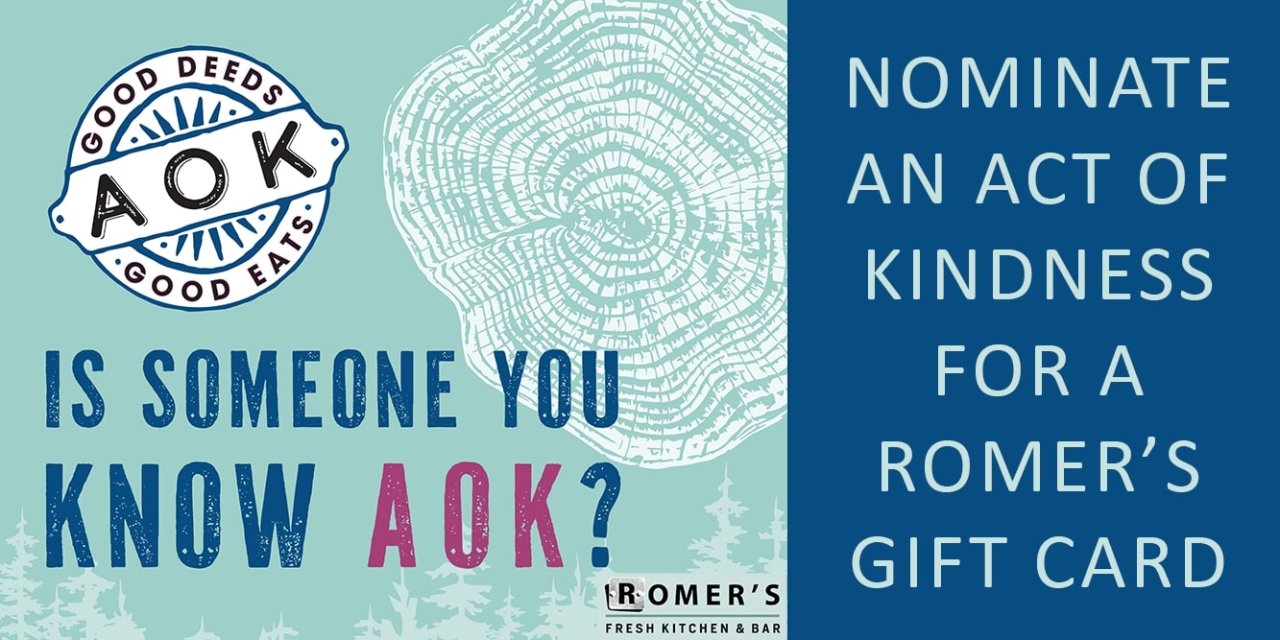Footprints of the Past
Today, Lynn Valley residents are surrounded by temperate rainforests enjoyed for their natural beauty and many hiking, biking, and walking trails. Just a hundred years ago, though, those forests were the industrial lifeblood of the settlers who came to earn their living at the lumber mills that formed the nucleus of the new community.
Lynn Valley was initially known as “Shaketown.” Some claim that was due to the shake-sided shacks that sprung up to house the first lumberjacks, cooks, blacksmiths and millwrights who settled around the lumber operations at the turn of the century; others say it was because of the cedar shakes and shinglebolts produced by the mill.
The heavily treed landscape was bisected by Tote Road, a rugged skid road built in order that oxen might haul felled logs down to the Moodyville waterfront, “Centre Road” (now Mountain Highway), and Pipeline Road, a plank road along which a pipeline was installed to carry drinking water from Rice Lake into North Vancouver.
Once the only direct route from Lynn Valley into North Vancouver, “Pipeline Road” is now Lynn Valley Road, and the name “Shaketown” was eventually dropped in favour of “Lynn Valley” – a misspelling of the pioneering Linn family who homesteaded at the mouth of Lynn Creek.
While the rest of North Vancouver has vastly expanded and now abuts Lynn Valley’s very doorstep, our community is still nestled against second-growth mountain forests nearly as wild as those encountered by early pioneers.
Lynn Valley residents live side-by-side with their history. Traces of the log flume – a wooden chute that used rushing water to transport shinglebolts down the mountainside – can still be seen from trails around Rice Lake; an old stone water trough sits near the junction of Mountain Highway and Lynn Valley Road in the heart of Lynn Valley. Those interested in learning more about our past – or contributing their own memories – should pop into the Community History Centre, located in one of the original Lynn Valley Elementary Schools on Institute Road, and operated by North Vancouver Museum and Archives. North Vancouver District also offers a historical tour of Lynn Valley here.
Below you’ll get a peek into Lynn Valley’s history with our “postcards from the past”. They are just some of the local landmarks that help today’s residents remember the pioneering spirit shown by our neighbours of long ago.
LYNN VALLEY HISTORICAL SITE LISTINGS
ST. CLEMENT’S CHURCH
In October, 1908, adherents to the Church of England gathered to discuss the possibility of building the first church in Lynn Valley. Until then, those people wishing to take part in Sunday morning worship had to walk some miles on rough skid road all the way to St. John the Evangelist Church at 13th and Chesterfield, the other side of Lonsdale Avenue.
The official opening of the resulting Anglican Church – on the newly dubbed Church Road – took place on Easter Day, 1909. In May, 1927, the church was rolled a short distance to its current position on Institute Road. (A move that allowed them to re-orient the church from a north-south direction to the more traditional east-west orientation.)
The anchor in front of the church was recovered from Burrard Inlet in 1977 by the Dillingham Corporation and donated to the church. The anchor is a symbol of St. Clement, bishop of Rome in the first century A.D.
Sources: St. Clement’s Church website (www.stclementschurch.ca) and Early Days in Lynn Valley by Walter Draycott
MILL STREET
Mill Street was – not surprisingly – the site of “Shaketown’s” first lumber mill, owned by James and Robert McNair of the Hastings Shingle Manufacturing Company. Built in 1903, the mill ran day and night, according to manager Julius Fromme.
A mill pond (still remembered today by people who grew up nearby) was formed by damming Thames Creek and widening its banks. Since Shaketown residents depended on water from the log flume for their water supply, they were allowed to draw water from it during certain hours in the evening.
Accidents stemming from the community’s log flumes were not uncommon; one small child fell into the flume and was fortunately rescued further downstream, and dogs and cats having a drink occasionally lost their footing and were swept away. Still, although it was against the rules, young men sometimes saved themselves a trek by riding the flume downstream in areas where the grade was steep enough.
Source: Early Days in Lynn Valley by Walter Draycott, reissued by District of North Vancouver in 2000
DOVERCOURT HOTEL (Lynn Valley and Hoskins)
The Dovercourt Hotel was built in 1909 by Harry Holland, who had visions of installing a beer parlour complete with all the beer-making and dispensing equipment he had shipped from his native England. However, sensibilities of the local (predominantly Presbyterian) population were such that he was never granted a liquor license. The hotel was run as a ‘dry’ establishment until its sale in 1923. In later years, it has served as a seniors’ home and rooming house.
Source: Early Days in Lynn Valley by Walter Draycott, reissued by District of North Vancouver in 2000
WALTER DRAYCOTT STATUE
(Lynn Valley & Mountain Hwy)
The bronzed statue of Walter Draycott has been a much-loved feature of Pioneer Park since its dedication in November, 1986. Originally from Belgrave, County Leister, England, Draycott was a veteran of both the Boer War and WWI, where his artistic abilities led to his appointment as the Official Military Topographer and Sketcher of the Canadian Army. It was to Lynn Valley that he returned after the war ended in 1918, and it was Lynn Valley that benefitted from his interests and community activities for the next six decades.
As a historian, he wrote long accounts of the early life of the community, and as a naturalist he recorded many of its geological landforms and plant and animal species (the fossil beetles found in Lynn Canyon Park were even given the name ‘Draycoti’ by a world-famous entymologist in the 1950s!)
Draycott was also active in many youth and community organizations, and was honoured as the Lynn Valley Good Citizen of the Year at Lynn Valley Day in 1974. He died in 1985 at the age of 102.
The commemorative statue at Pioneer Park was sculpted by Kevin Head; like Draycott himself, the statue has led an adventurous life. It is usually decorated by locals to celebrate events such as Canada Day, and once went missing altogether. Fortunately, the Draycott statue was discovered not long after, sitting beside a similarly bronzed elderly lady in Stanley Park. It was, of course, Valentine’s Day.
Source: North Vancouver Archives, “A Glimpse of Lynn Valley” photographic collection and Early Days in Lynn Valley by Walter Draycott, reissued by District of North Vancouver in 2000
LYNN CANYON PARK
Lynn Canyon Park was the brainchild of one J.P. Crawford, a Lynn Valley land agent who convinced Vancouver’s McTavish Brothers to donate 12 acres of property to serve as an attraction that would bring more settlers to the area.
It was the first park in Lynn Valley, which was still heavily treed in most areas. Before a landslide changed the topography of the area dramatically, the park had playing fields, a bandstand,
picnic shelters and outdoor cooking facilities. It hosted the first-ever Lynn Valley Day in 1912, a grand occasion attended by thousands of people from all over Greater Vancouver, who arrived via decorated ferry boats and a new B.C. Electric streetcar line.
That day also marked the opening of the suspension bridge that crosses high over the roaring waters below. When first opened, it cost ten cents to cross –whether or not you were brave enough to make it all the way to the other side! It eventually fell into disrepair and was closed, but has for some decades now been well-maintained by the District of North Vancouver, which provides this free attraction to local residents and the thousands of tourists who flock there every year.
For a historical look at the park on the occasion of its 100th anniversary, click here.
Source: Early Days in Lynn Valley by Walter Draycott, reissued by District of North Vancouver in 2000
FROMME BLOCK
The Fromme Block, built in 1912 by mill owner Julius Fromme, is the only remaining edifice from the original commercial buildings that were built at the intersection of Lynn Valley Road and Mountain Highway. Along with other businesses, the Fromme Block housed the local post office, assuming the management of it from Mrs. Alice Sugden.
Mrs. Sugden had run the post office from her home at
1535 Kilmer Rd. since 1906, making daily, usually difficult trips into North Vancouver to fetch the community’s mail. Travelling by horse and buggy through muddy, rutted roads, she always carried a loaded pistol to discourage cougars and thieves alike!
Over the past decades, the Fromme Building has housed local landmarks such as the corner antique store and an old-time barber shop. In recent years, though, the property has been redone and is now home to the TD Bank.
Source: North Vancouver Archives and Early Days in Lynn Valley by Walter Draycott, reissued by District of North Vancouver in 2000
FIRST MUNICIPAL HALL
North Vancouver District, incorporated in 1891, chose Lynn Valley to house its first municipal hall, as its booming timber trade and resulting influx of workers and families meant the area around “Shaketown” was central to the fledgling municipality. It hit the national news on at least one occasion – during the Depression, when two councillors, unable to reach consensus in chambers, ‘took it outside’ and waged a pitched battle on the lawn until the police arrived to break up the fight.
The hall remained until 1960, when operations were moved to Queens Road, west of Lonsdale Avenue. Now Lynn Valley Lodge and the North Shore Private Hospital occupy the land, but the stone wall that parallels the sidewalk still brings to mind memories of the property’s proud civic past.
Source: North Vancouver Archives, “A Glimpse of Lynn Valley” photographic collection and Early Days in Lynn Valley by Walter Draycott, reissued by District of North Vancouver in 2000
MOLLIE NYE HOUSE
Local pioneer Jack Nye was given 160 acres of land in Lynn Valley as a result of his service in the Boer War. Some of that he sold for community uses (such as the land on which the first municipal hall was built) and on some of it (in 1912) he built a family home for his wife and two daughters.
His daughter Mollie lived there virtually all her life, growing up to become a North Vancouver schoolteacher who spent 22 of her teaching years at nearby Sutherland Secondary. She was also known for her prolific gardens, and was a lifetime member of the Lynn Valley Garden Club.
On her death in 1997, she bequeathed her property to North Vancouver District, which had her house moved forward to allow for the development of the Sunrise seniors’ home. Local organizations such as the Lynn Valley Lions, the Lynn Valley Community Association and the Lynn Valley Seniors’ Association helped refurbish the home, and it now provides programs and services for people throughout the community.
Source: North Vancouver Archives, “A Glimpse of Lynn Valley” photographic collection and Early Days in Lynn Valley by Walter Draycott, reissued by District of North Vancouver in 2000
OLD GROUSE MOUNTAIN HIGHWAY
By 1911, hordes of intrepid citizens of yesteryear were taking the ferry from Vancouver to walk from the shoreline to the top of Grouse Mountain – quite a feat, but one that proved popular with thousands of people.
A group of businessmen became convinced that there was a great market opportunity if they could tap into this interest by building a road and chalet up to Grouse’s summit via Fromme Mountain at the top of Lynn Valley. Money was raised, and in 1926 roadwork began (Lynn Valley pioneer Walter Draycott notes that he conducted a party of local teenagers to the summit the year before.)
Because a steep incline was not wanted, a long, 13-km roadway consisting of several switchbacks resulted. The well-built roadbed consisted of crushed rock that was up to three metres thick, and it was ready for business in 1927. Unfortunately, the Depression years, along with an accident that left the new Second Narrows bridge unusable for four years, meant that use of the road and the chalet fell off abruptly not long after it was opened. By 1935, the highway had to be closed as the company that owned it was bankrupt.
Today, though, people from all over the world flock to the area and use the Old Grouse Mountain Highway as the jumping-off point for dozens of mountain biking trails. For that, they can thank its original visionary, 1920s businessman William Curtis Shelly.
Source: Chuck Davis, The History of Metropolitan Vancouver website: http://www.vancouverhistory.ca/archives_grouse.htm
MAPLE LEAF NURSERY
It is hard to imagine that under all the ferns, trees, flowers and garden implements at Maple Leaf nursery lies the foundation of one of Lynn Valley’s first churches.
Pioneer Julius Fromme donated land for the building of Knox Presbyterian Church, which opened on April 14, 1911. Later, various denominations in Canada – including the Presbyterians – combined to create the United Church, and the building was no longer needed. In 1967, it was demolished but the basement remained and formed the foundation of the new nursery operation you see today – the place where local citizens buy their pots and trellises!
For many years after the nursery moved in, the owners lived in the old church rectory. Eventually it, too, was demolished.
Source: Early Days in Lynn Valley by Walter Draycott, reissued by District of North Vancouver in 2000
END OF THE LINE GENERAL STORE
More than a hundred years ago, one of the area’s first stores was built at this site – the end of the streetcar line. (While passengers paid a nickel to get from the waterfront all the way into central Lynn Valley, they had to pay an extra two cents for a ride up the final hill!)
In the early days, hikers could load up with provisions at the grocery before hiking in to camp on Mount Seymour.
Today, people still use the End of the Line store to stock up on snacks before enjoying one of the many nearby hiking trails, or to cool off with a drink after cycling in the Seymour Conservation Reserve, which can also be accessed near the store.
The top of Lynn Valley Road was still the ‘end of the line’ for the #228 Lynn Valley bus for decades. Only recently has it moved its terminus around the corner to the bottom of Underwood Avenue.
Source: Early Days in Lynn Valley by Walter Draycott, reissued by District of North Vancouver in 2000
LYNN VALLEY PARENT PARTICIPATION PRESCHOOL AND ARCHIVES BUILDING
The Lynn Valley Parent Participation Preschool is located in Lynn Valley’s second schoolhouse, built in 1908 to replace an earlier one-room structure that had become overcrowded.
A third, even larger building was built nearby in 1912, and a fourth in 1920. While the third Lynn Valley School was torn down in 2004 to make way for the current elementary building, the stone school from the 1920s was repurposed and now houses a Community History Centre, operated by the North Vancouver Museum and Archives Commission.
Source: North Vancouver Archives, “A Glimpse of Lynn Valley” photographic collection and Early Days in Lynn Valley by Walter Draycott, reissued by District of North Vancouver in 2000
DANCE HALL (3355 Mountain Highway)
It’s now a dance school for young people, but the addition to the large hall on Mountain Highway has a proud old history. It’s actually the top floor of Lynn Valley Methodist Church, which was built on nearby Institute Road in approximately 1920. After being decommissioned by the church, the building was used as a community centre after fire destroyed the local Institute Hall in 1933.
In 1962, the ground floor of the church building was demolished and the top floor moved to its current home on Mountain Highway.
Source: North Vancouver Archives, “A Glimpse of Lynn Valley” photographic collection and Early Days in Lynn Valley by Walter Draycott, reissued by District of North Vancouver in 2000
WATER TROUGH at TD CANADA TRUST
The stone trough located beside the TD Bank was once the watering hole for the local horses, including those used to help the volunteer fire crew haul heavy hose reels to the scene of the blaze. While the trough was originally placed here near the Fromme Block, it was later moved further up Lynn Valley Road (towards Allan Road) when the fire hall shifted there from its original location near the Lynn Valley library site.
The trough was eventually sent to the municipal dump, but was later recovered and restored by local fire captains, and rededicated at its current location in 1995. For a full history of the water trough and its restoration, visit this North Van District document. http://www.dnv.org/upload/documents/District_History/56884C.pdf
Source: Early Days in Lynn Valley by Walter Draycott, reissued by District of North Vancouver in 2000





